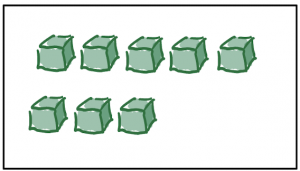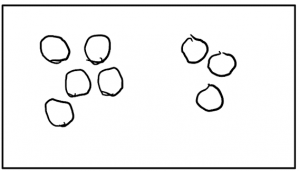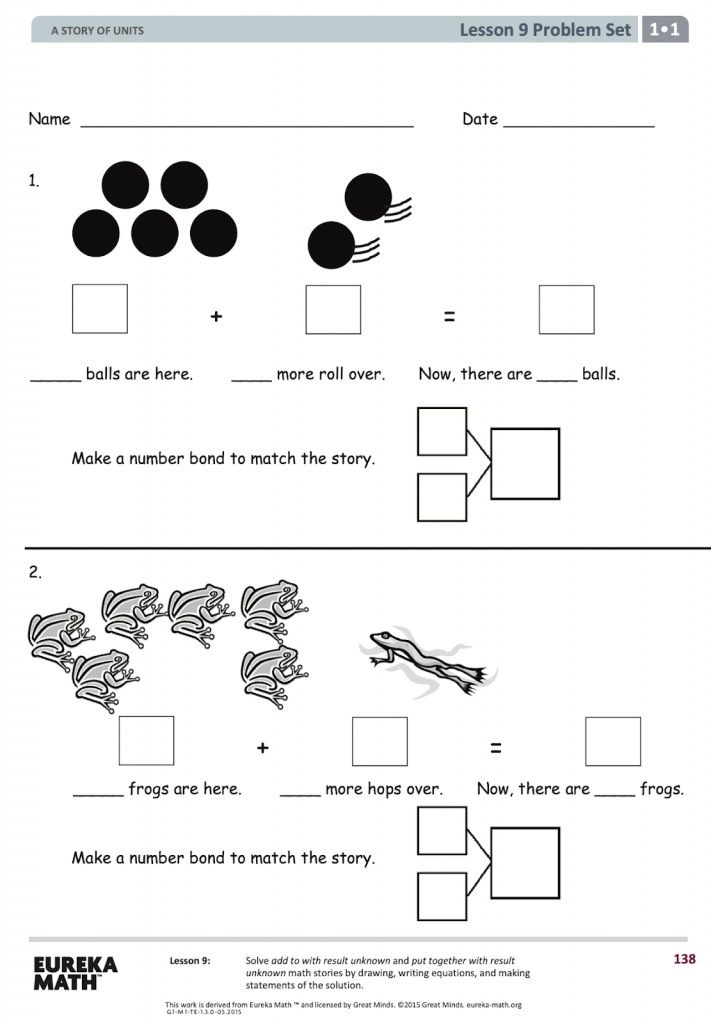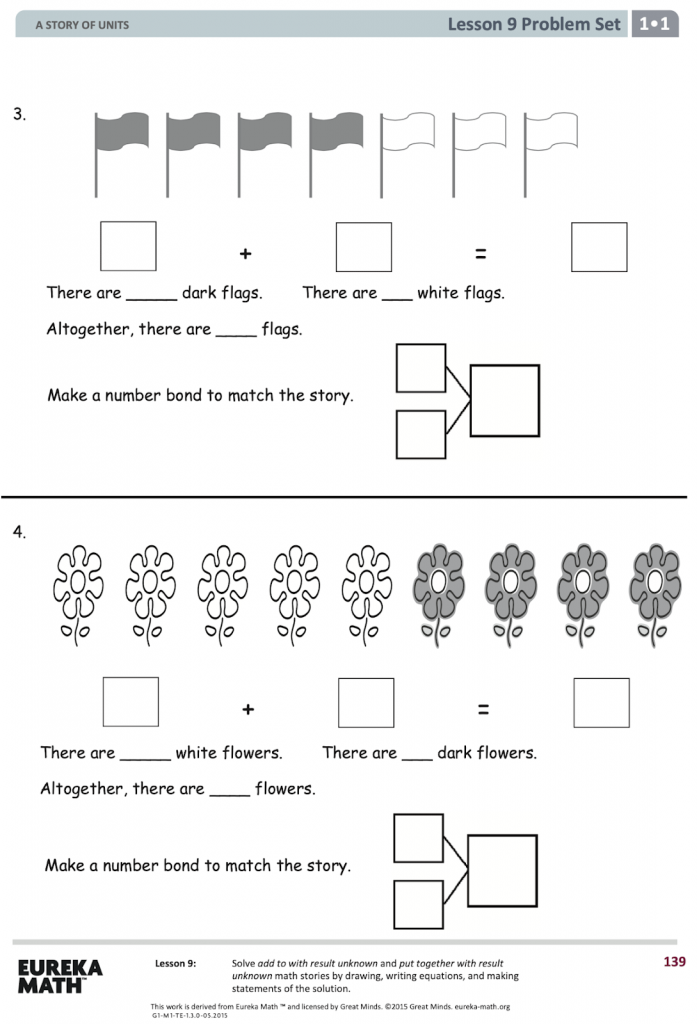TL;DR
- Mathing is the process of students understanding math concepts.
- Studenting is the process of students applying that understanding to a worksheet.
- Both need to happen.
- Mathing is more important than studenting.
—
Let me briefly share a recent 1st grade lesson I taught to explain what are mathing and studenting and why we need BOTH!
I was recently invited into a 1st grade classroom to demonstrate what a Bansho lesson might look like. (For more on Bansho, check out this blog post and this one too.) Since it was early in the school year, I started with a word problem that is technically a Kindergarten problem type.
After I introduced the problem with a quick Three-Read protocol, students began working at their desks to model this story. Some students used cubes, while others began by drawing frogs on their whiteboards. Occasionally, I would announce to the class something along the lines of “Hey everybody. Look at what Alonzo is doing. He drew circles to represent the frogs. Can you all draw circles too? Give it a try.” Or “Hey everybody. Look at the number bond Camilla created to represent the story. Try using a number bond to represent the cubes you are using…or the circles you are drawing.”
As students were working individually or in pairs at their desks, I supported individual students informally, providing them with the “just in time” instruction they needed at the time. I call this “teaching between the seats”.
Eventually students had had enough time working on this problem and we were ready to share student thinking. I had selected and sequenced three students to share out. Each student had used one or more of the representations: concrete, pictorial representation, abstract.
One student used cubes, so I drew cubes on the board. Another student used circles to represent the frogs. A third student share the number bond she drew.
Underneath each student’s idea, I wrote the number sentence 5 + 3 = 8.
I told students for their next problem I wanted them to attach a number sentence to however they modeled the problem. I then posted the second story problem for students to work on.
It did not take long for all students to model the problem in at least one way AND write the corresponding number sentence 4 + 5 = 9.
Now it was time for independent practice, so the teacher handed out a worksheet that was nearly identical in math content.
The worksheet was pretty typical for this type of math content.
Almost immediately confused students were raising their hands asking what to do. There were boxes and blank spaces that students didn’t know what they were expected to do with them. This is when I recognized the difference between mathing and studenting.
My lesson got students mathing. Mathing is the process of students developing a deep and profound understanding of mathematical concepts and procedures. Mathing is the work students do when they are behaving like mathematicians: using manipulatives, drawing pictures, using numbers and symbols to represent the math story.
The worksheet is studenting. Studenting is the act of students learning to conform their mathematical understanding (their mathing) to expected norms of math textbooks. For example, blank boxes and blank spaces are the cultural shorthand way of saying “Put a number here.”
Studenting, like all other cultural norms, must be explicitly taught much like teaching our children to say “Bless you” when someone sneezes.
Mathing is math. Studenting is NOT math!
A common lesson structure I’ve seen observed is teachers guiding students problem-by-problem (blank space by blank space) through a worksheet. Sometime this studenting is necessary! Students NEED to learn the cultural norms of blank spaces and other unspoken rules of textbooks and worksheets. But this is NOT mathing! We are doing our students a disservice when we conflate studenting with mathing.
Studenting probably does not need to happen daily. Mathing does!
Students need both.
Let’s start with mathing…to learn the math. Then occasionally throw in some studenting to help our students learn the cultural norms.
Using the FIABs and IABs from the CAASPP website is another great source for studenting. How often have I heard teachers notice the disconnect between the mathing occurring in the classroom and how the same math concepts are presented on the FIAB. This is a great time to use problems from a FIAB to explicitly teach students the norms of how psychometricians design test questions.
As you teach in your classroom…notice when you are mathing and when you are studenting. Mathing is most important…studenting less so.
.
.
.





